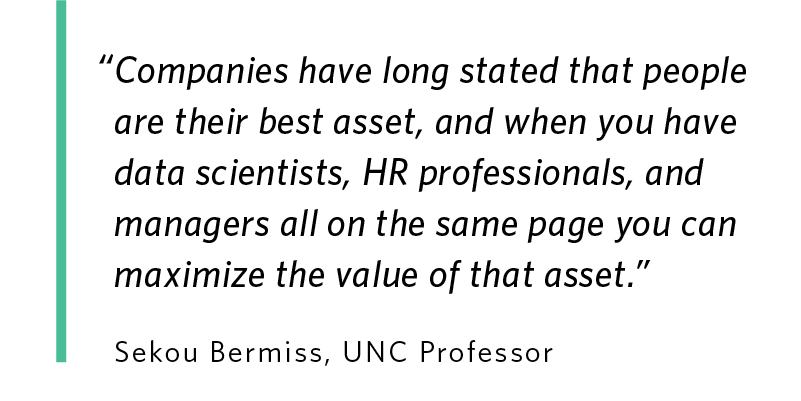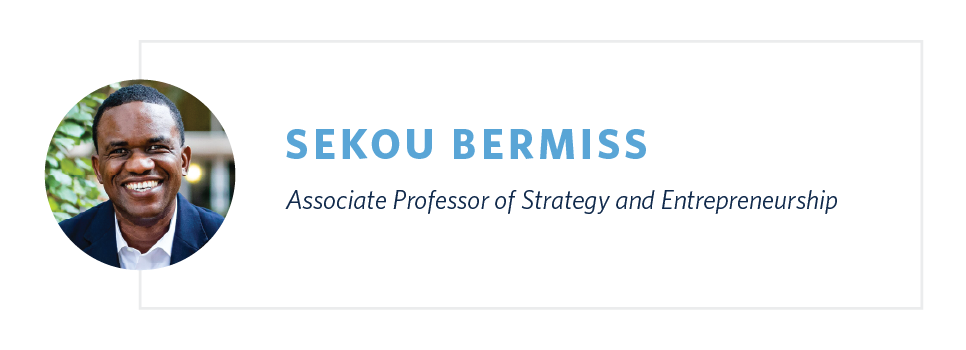Thought Leadership
4 Steps for Adopting a People Analytics Mindset

Thanks to the Digital Revolution, vast amounts of data are always at our fingertips. Organizations in every sector are applying data analytics to boost their bottom line, from untangling snarls in supply chains, to encouraging impulse buying by fine-tuning store layouts, to leveraging donor profiles to maximize charitable giving.
Yet data analytics can help organizations optimize yet another resource, and one that is arguably the most critical to an organization’s success: human capital. Leaders who successfully adopt a “people analytics mindset” can help their organizations achieve greater success in attracting, onboarding, and retaining top talent.
A Competitive Edge
Thanks to forces such as the COVID-19 pandemic, inflation, and a rising number of retirees, the competition to attract and retain talent is fierce. UNC Professor Sekou Bermiss recommends that organizations seek a competitive edge by integrating data analytics into their HR functions. “Companies have long stated that people are their best asset,” he observes, “and when you have data scientists, HR professionals, and managers all on the same page you can maximize the value of that asset.” Data analytics presents leaders with prime opportunities to make better decisions about how they manage human capital and thus drive organization-wide performance.

Adopt a People Analytics Mindset: 4 Critical Questions
Because unpredictability is an inescapable part of human nature, the task of applying data analytics to human resources might seem especially daunting. However, Sekou offers a tool that can help your organization get started. Asking four critical questions will help you adopt a people analytics mindset as you and your team conceptualize HR opportunities and challenges within your organization.
1) “What is the problem that I am trying to solve?”
The first step in tackling any challenge is to identify and articulate the problem. For HR leaders, this might be high turnover or low employee satisfaction scores.
2) “How do I measure this problem?”
An organization can only determine if it is moving closer to (or further from) its goals by tracking at least one objective measurement over time.
3) “What is my theory about the primary cause of this problem?”
A theory is simply an explanation of why something happens. What do you believe explains your organization’s HR challenges? An organization struggling with a candidate shortage, for example, might theorize that it is due to the lack of an obvious career path within the organization.
4) “Based on my theory, what is an intervention that I can introduce that should solve my problem?”
An intervention is a change in your organization that should solve your problem. When developing your intervention, it is critical to adhere to your theory and to remain objective. While the ultimate goal is to solve the problem, a well-formulated intervention will also generate insights that can help your organization solve its talent challenges.
Better Tools, Better Decisions
People are an organization’s greatest asset. Therefore, organizations that successfully incorporate data analytics into their management of human resources will gain an invaluable tool for predicting and solving HR challenges. By asking four critical questions, you can help your organization adopt a people analytics mindset and make better decisions when it comes to top talent.
